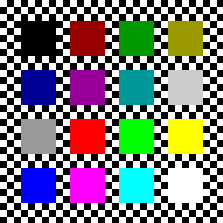
 |
Description | Article from CQ-TV | PC Software | |
| Keypad Interface | Serial Interface | Circuits | ||
| Ordering | Documentation | Contacts | ||
| Connecting | ||||
| The MATRIX | ||||
The original design came from the need to connect an increasing number of composite video and audio items together, in different combinations, without having to keep identifying the leads, finding the plug types didnít match or that the cables werenít long enough!
A simple and easy way of controlling the switching was required that would also be flexible and would permit the use of a computer to allow more complex arrangements to be handled.
The solution uses a simple PIC based controller with a two-line LCD display and a Hex-Keypad, it can also be connected to any computer via a standard serial interface. The switching itself is carried using a Philips I2C chip (TDA8540). This allows for 4 inputs and 4 outputs to be fully cross-connected. The basic circuit is then replicated as many times as is necessary to meet your own requirement of inputs and outputs in any given switching plane. Up to 10 planes can be handled, each plane can be of a different size and put to a different use, or can be setup to work as a group (Video + Left Audio + Right Audio typically).
In addition to the switching, provision has been made for a significant I/O capability to allow the control of equipment if required. On the basic controller board a single 8 bit I/O channel has been incorporated, but a further 7, 8-bit channels can be added on an expansion board, along with a number of other facilities, if needed. This allows control of transmitters, repeaters, quad and PIP facilities etc. If there is sufficient demand then other add-on boards will also considered such as S-VHS switching, Video Test cards, Video Overlay and Mixing facilities all via the same interface.
For those who would like to implement additional hardware or write other interfaces, full details of the hardware and control interface will be published.
Shipping of hardware has now commenced and a number of small software improvements have been incorporated in version 1.03 of the software.
The code for the controller was developed using WIZASM.
Page last edited: 2008-02-28